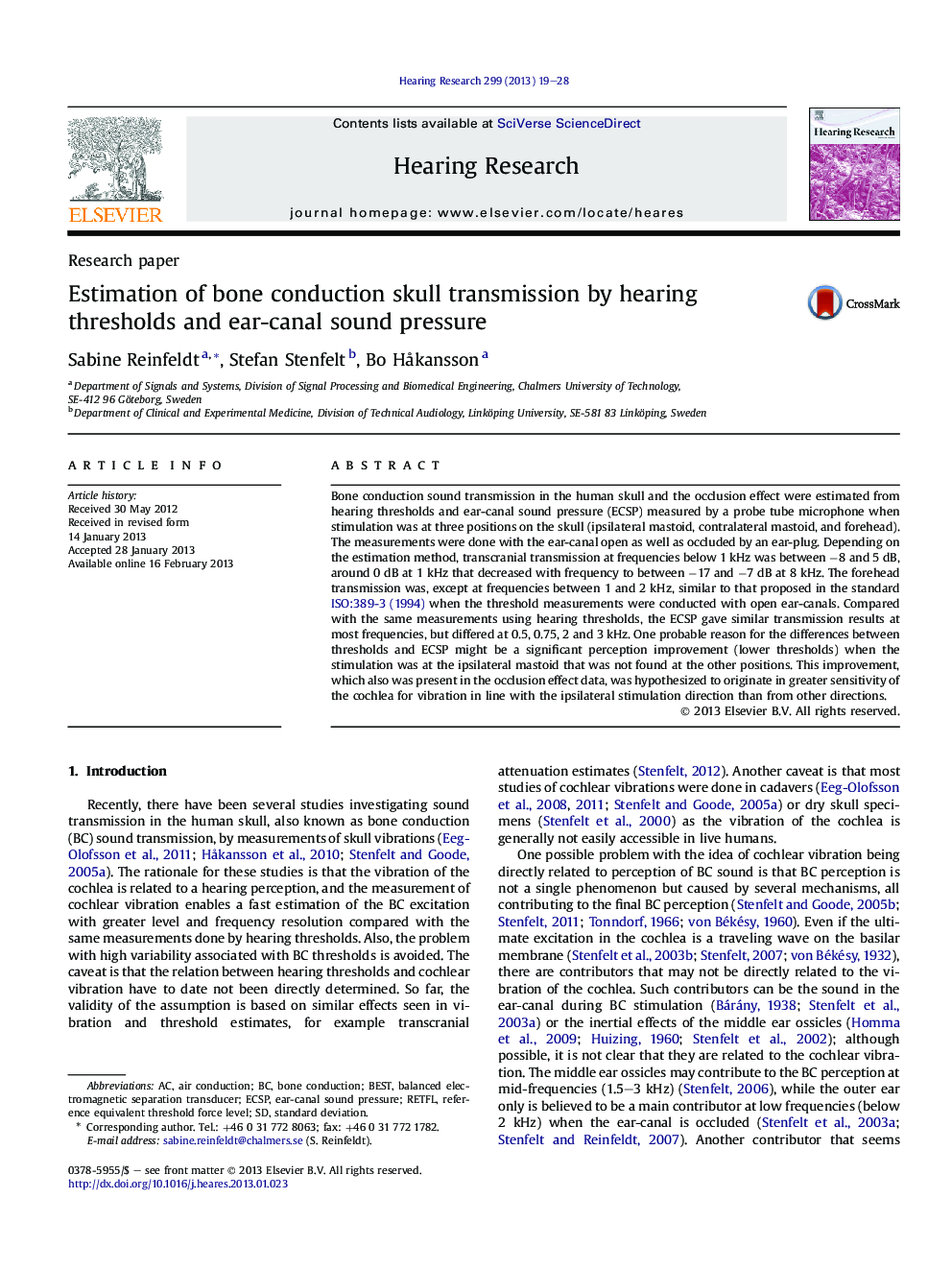| کد مقاله | کد نشریه | سال انتشار | مقاله انگلیسی | نسخه تمام متن |
|---|---|---|---|---|
| 4355225 | 1615601 | 2013 | 10 صفحه PDF | دانلود رایگان |

Bone conduction sound transmission in the human skull and the occlusion effect were estimated from hearing thresholds and ear-canal sound pressure (ECSP) measured by a probe tube microphone when stimulation was at three positions on the skull (ipsilateral mastoid, contralateral mastoid, and forehead). The measurements were done with the ear-canal open as well as occluded by an ear-plug. Depending on the estimation method, transcranial transmission at frequencies below 1 kHz was between −8 and 5 dB, around 0 dB at 1 kHz that decreased with frequency to between −17 and −7 dB at 8 kHz. The forehead transmission was, except at frequencies between 1 and 2 kHz, similar to that proposed in the standard ISO:389-3 (1994) when the threshold measurements were conducted with open ear-canals. Compared with the same measurements using hearing thresholds, the ECSP gave similar transmission results at most frequencies, but differed at 0.5, 0.75, 2 and 3 kHz. One probable reason for the differences between thresholds and ECSP might be a significant perception improvement (lower thresholds) when the stimulation was at the ipsilateral mastoid that was not found at the other positions. This improvement, which also was present in the occlusion effect data, was hypothesized to originate in greater sensitivity of the cochlea for vibration in line with the ipsilateral stimulation direction than from other directions.
► Hearing by bone conduction was estimated by the sound pressure in the ear-canal.
► Transcranial and forehead transmissions were estimated.
► There were similar results for thresholds and ECSP, except at some frequencies.
► Greatest sensitivity of the cochlea was for stimulation on the ipsilateral mastoid.
Journal: Hearing Research - Volume 299, May 2013, Pages 19–28